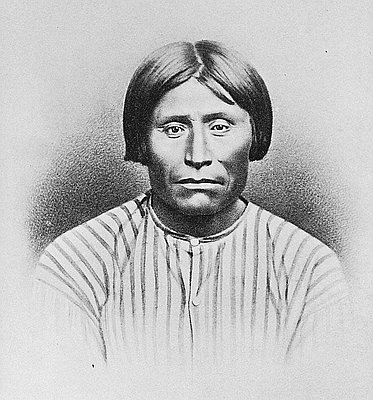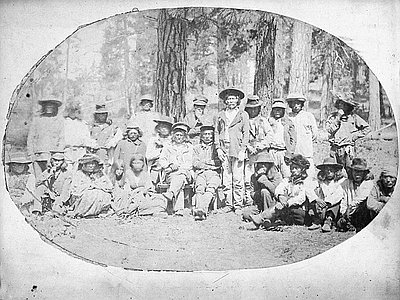The first non-Indians who appeared in the Klamath Basin were mountain men. Working from Fort Vancouver on the Columbia River, the western headquarters of Hudson’s Bay Company, their objective was to trap as many beaver as possible.
The purpose of their London-based company was political as well as economic: not only to sell beaver pelts but also to create a “fur desert” that would leave American trappers no motive to enter the Oregon territory, which was then disputed between the United States and Britain.
Finan McDonald and Thomas McKay arrived in the Klamath Basin in 1825. Like many trappers of their time, they had close relations with Native people or were part Native themselves. An imposing Scotchman, six-foot-four with red hair and a beard, McDonald was married to a Spokane Indian woman. McKay’s father was Scotch, his mother a Cree Indian, his wife the daughter of a Chinook chief. Influenced perhaps by the mountain men’s ability to relate to Native people, Klamath Indians, upon encountering their party of thirty-two men, warned them to beware of the Indians to the south, the Modocs.
The next year McKay returned to the Klamath Basin under the command of Peter Skene Ogden. Born in Quebec in 1794 to a Loyalist family that fled the American Revolution, Ogden had trapped beaver from the Great Lakes to the waters of the Columbia. This expedition comprised two dozen mountain men, who did the hunting and trapping, and their Indian wives, who prepared game and cured hides.
Upon reaching Klamath Marsh in December 1826, Ogden encountered what he called the “Clamitte Indian Village,” using the Chinook name for the tribe. There Ogden obtained fourteen fish of a kind he had not seen before and nine dogs. Ogden named Upper Klamath Lake “Dog Lake” after his newly acquired food supply.
Accompanied by two Klamath Indian guides, the party saw the Klamath River headwaters and looked over the lakes and marshes to the south. Although Ogden found the river disappointingly “destitute of Beaver,” his men took hundreds of beaver pelts from its tributaries, the Shasta and Scott rivers, and from streams that flow into them.
© Stephen Most, 2003. Updated by OHP staff, 2014.









